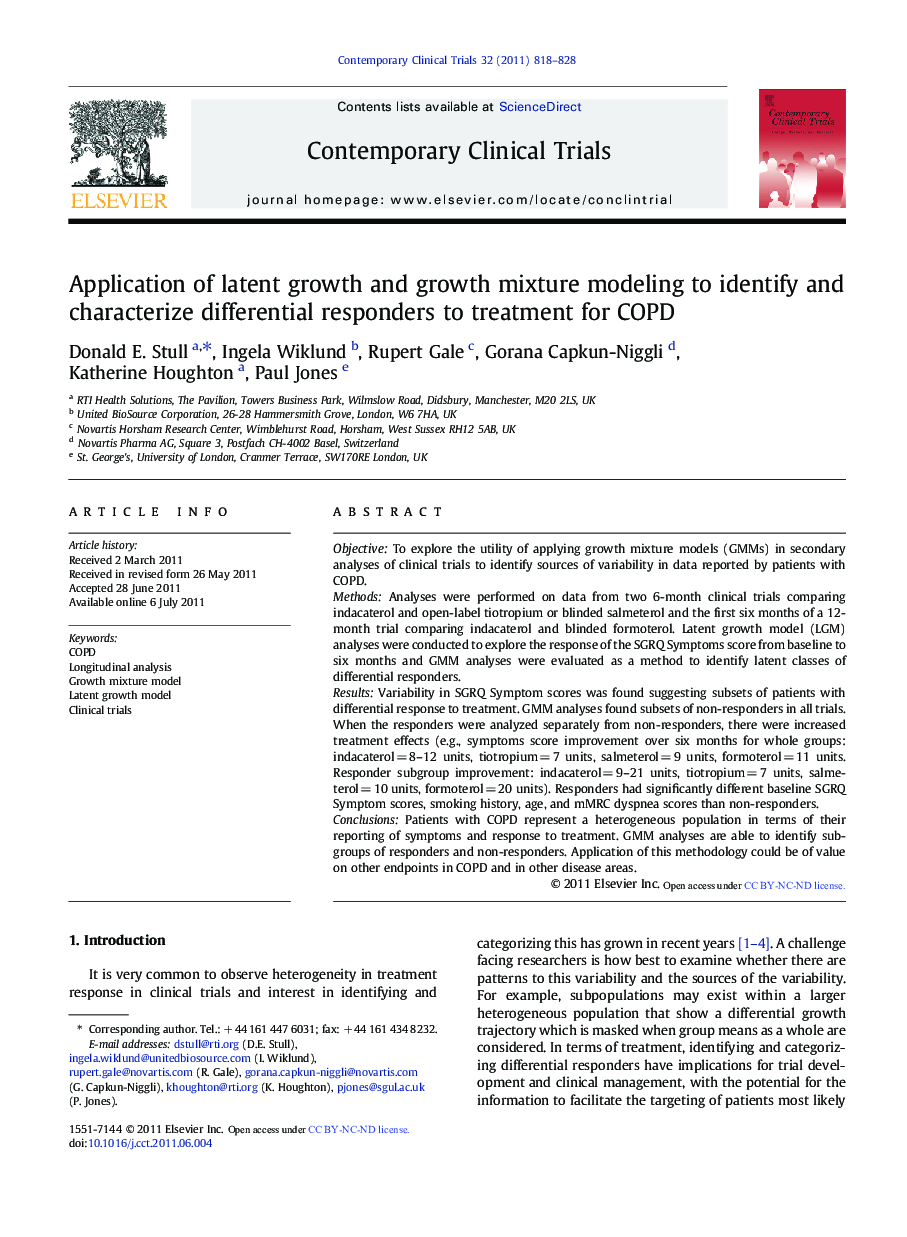| Article ID | Journal | Published Year | Pages | File Type |
|---|---|---|---|---|
| 6151460 | Contemporary Clinical Trials | 2011 | 11 Pages |
ObjectiveTo explore the utility of applying growth mixture models (GMMs) in secondary analyses of clinical trials to identify sources of variability in data reported by patients with COPD.MethodsAnalyses were performed on data from two 6-month clinical trials comparing indacaterol and open-label tiotropium or blinded salmeterol and the first six months of a 12-month trial comparing indacaterol and blinded formoterol. Latent growth model (LGM) analyses were conducted to explore the response of the SGRQ Symptoms score from baseline to six months and GMM analyses were evaluated as a method to identify latent classes of differential responders.ResultsVariability in SGRQ Symptom scores was found suggesting subsets of patients with differential response to treatment. GMM analyses found subsets of non-responders in all trials. When the responders were analyzed separately from non-responders, there were increased treatment effects (e.g., symptoms score improvement over six months for whole groups: indacaterol = 8-12 units, tiotropium = 7 units, salmeterol = 9 units, formoterol = 11 units. Responder subgroup improvement: indacaterol = 9-21 units, tiotropium = 7 units, salmeterol = 10 units, formoterol = 20 units). Responders had significantly different baseline SGRQ Symptom scores, smoking history, age, and mMRC dyspnea scores than non-responders.ConclusionsPatients with COPD represent a heterogeneous population in terms of their reporting of symptoms and response to treatment. GMM analyses are able to identify sub-groups of responders and non-responders. Application of this methodology could be of value on other endpoints in COPD and in other disease areas.
